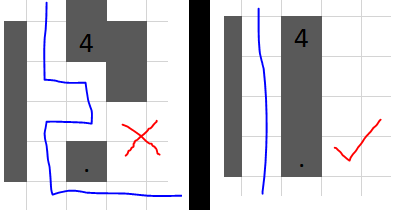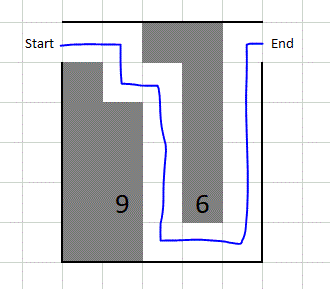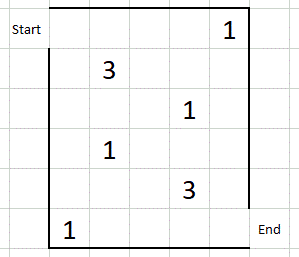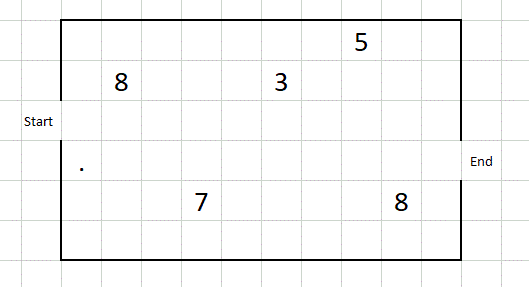I was toying around with grid-based puzzles, and I cancame up with a format that I'm not sure exists yet, and from my testing leaves only one solution. (If it exists or is broken, please let me know so I can adjust this post.)
I'm calling this a hidden path maze. These are the rules:
- The objective is to draw a path from the entrance of the maze to the exit.
- Every square in the grid is either part of the path, or a wall.
- The numbers indicate how many squares of wall are in a block, including that square. Walls are considered connected into a block if they are orthagonally adjacent
- A dot represents a section of wall that must be included as part of a numbered wall block.
- Walls can only exist as numbered blocks. There can be no walls that are not connected to a numbered block.
- The path may only connect orthogonally adjacent squares.
- The path may not intersect any of the walls in the maze.
- The path will always follow the most direct route to the goal. As such, the path may not run adjacent to itself. (example below)
Here is an example of a solved board:
Using these rules, it should be possible to solve the following boards.
Easy board:
Moderate board:
And if these are popular I'll make some more :)




